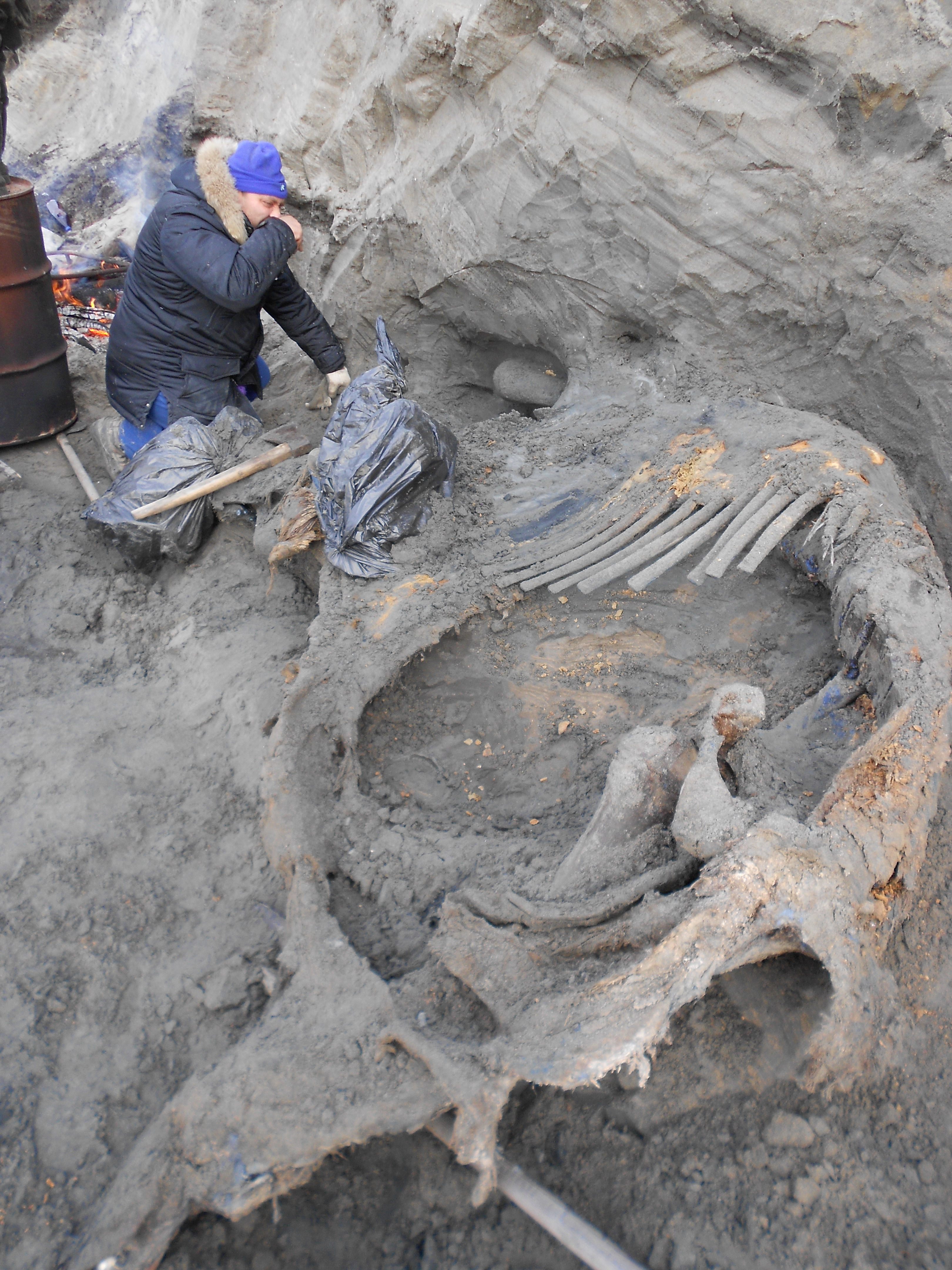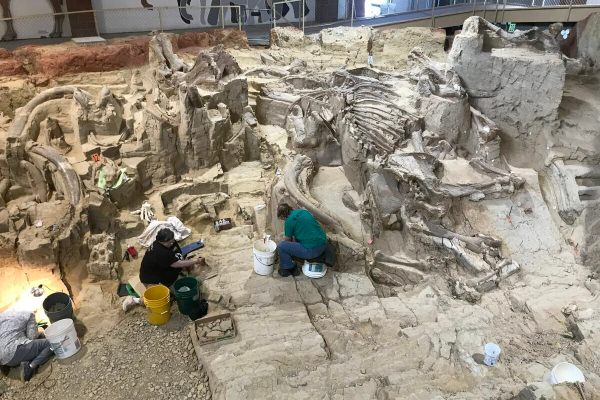New Evidence of Mammoth Hunting Puts Humans in the Arctic 10,000 Years Before They Were Supposed to Be There

Sergey Gorbunov excavating the mammoth (Photo: Pitulko et al., Science (2016))
More than 40,000 years ago, in the Arctic reaches of what’s now Russia, the population of mammoths was at a peak. This was before the last glacial maximum–the last era when ice sheets reached down to cover extensive parts of Asia, Europe and North America–and even in the far north, mammoths would have had large expanses of open landscape in which to roam.
Astonishingly, according to a new study, published in Science, humans may have followed them there, on the hunt, further north into the Arctic than anyone ever realized humans had traveled that early in history.
New evidence, of human-made marks on mammoth bones, shows that humans had already populated the Arctic as early as 45,000 years ago, a team of researchers from the Russian Academy of Sciences reports in the new study. That would put our species in that region 10,000 years earlier than any previous evidence has shown.
The latest evidence comes from a single mammoth carcass, first discovered in August 2012, not far from a weather station in Sopochnaya Karga, an area of Russia that stretches further north than the northernmost points of Scandinavia. That summer, a student was walking along the river bank when he spotted bones in an exposed bluff.
In the Russian Arctic, it’s not so unusual to find a frozen carcass of a prehistoric mammoth, but it’s still a notable event. The director of the weather station duly notified the Mammoth Committee of the Russian Academy of Sciences, and that fall, a team arrived to excavate the carcass.
As they worked, the team leader, Alexei Tikhonov, noticed that the mammoth’s tusk looked somewhat unusual–a hint that this ancient mammoth might have had an encounter with ancient humans. The mammoth carcass was also unusually complete, with frozen soft tissues still intact. It looked to be relatively young and healthy; what killed it?
The carcass went into storage over the winter, and the block of frozen ground sat waiting for inspection, until the spring of 2013, when it was delivered to St. Petersburg, still frozen, to be cleaned and studied.
“When the frozen block with the carcass arrived to St Petersburg, I went to the Zoological Museum to look at the bones and tusk,” says Vladimir Pitulko, the lead author on the Science paper. “The second bone which I picked up (that was the fifth left rib) had a clear pattern of human impact–a slicing cut mark made by some sharp lithic implement.”
As they examined the carcass, Pitulko and his colleagues found other evidence of injuries. There was a small, round hole on one skull bone. There was another injury on a right rib. The mammoth had been hit multiple times in its shoulder blade. Those injuries all happened when the mammoth was alive, but there were signs of damage after its death, too. Its jawbone, for instance, was broken, and its tusks had been modified.
These injuries were not consistent with a bone disease or with a non-human carnivore, according to Pitulko. The hole on the skull bone, for instance, was created by some sort of sharp, pointed tool.
“We were absolutely certain about human involvement into the death of the animal,” he says. “It was killed, clearly. Except we did not know when.”
By dating both the bones and the stratigraphical layers of earth in the place where the carcass had been found, the team was able to establish its age. The layers of earth above the mammoth carcass were in the vicinity of 35,000 years old, which meant the mammoth carcass itself would be even older. Carbon dating the tibia bone gave the team an age of approximately 45,000 years before the present.
Outside of this mammoth carcass, there are a couple of other sites that put humans in the Arctic in the period before the last glacial maximum, tens of thousands of years ago. But this is the evidence that goes furthest back into the past, putting humans in the Arctic tens of thousands of years before this area was thought to have been first inhabited by people.
In the study, the researchers conclude by noting that “the early arrival of humans in the area close to the Bering land bridge may have provided an opportunity for humans to enter the New World before the Last Glacial Maximum.”
Right now, the best archaeological evidence indicates that humans did not cross into North America until the end of the glacial period, a relatively short 15,000 years ago (give or take a couple of millennia). If humans were hanging out in Siberia before the ice started to creep southward, though, it raises the question of whether they might have crossed from Asia to the Americas tens of thousands of years sooner.
“These finds are bringing more questions than ready answers,” says Pitulko. At the very least, it opens up a new picture of human expansion over the globe, of humans traveling north, into lands rich with giant mammoths, just waiting to be taken down.










Follow us on Twitter to get the latest on the world's hidden wonders.
Like us on Facebook to get the latest on the world's hidden wonders.
Follow us on Twitter Like us on Facebook